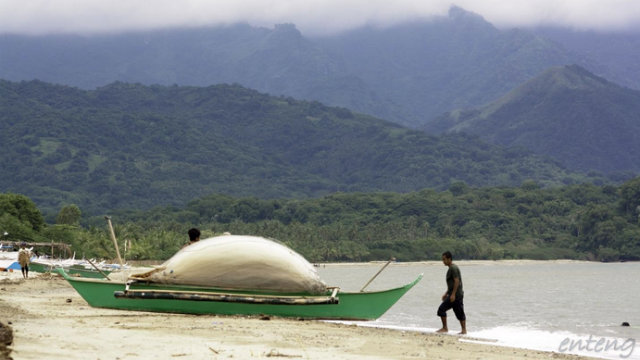Protect the Verde Island Passage
'Developments in Batangas are presenting an even worse threat to the lush but fragile ecosystems of the Verde Island Passage'
The 1.14 million-hectare Verde Island Passage (VIP) Corridor – a sea expanse between the littoral provinces of Batangas, Oriental Mindoro, and Occidental Mindoro, Marinduque, and Romblon – is widely acclaimed as the global "center of the center of marine biodiversity" for hosting the greatest number of shorefish species in the world.
A 2004 study documented a staggering 1,736 marine species, including many globally threatened ones, in just a small section of the area.
PROTECT. Environmental advocates investigating coal’s potential risks in Batangas city. Photo by Leon Dulce/Kalikasan PNE
Dr Richard Mooi couldn’t have described the passage any better: “The Verde Island Passage is living up to its reputation: the ocean vibrates with the cycle of living things inhabiting every nook and cranny.”

Mt. Lobo, one of the top biodiversity areas in the country, is part of the complex ecosystem that sustains the Verde Island Passage. Photo by Clemente Bautista/Kalikasan PNE
Its abundant marine ecosystems make the passage a highly productive fisheries area, and a choice dive spot that drives tourism in surrounding provinces. This underscores the VIP’s importance not only for scientific research, but especially for its direct sustenance to hundreds of thousands of Filipinos whose livelihoods rely on the corridor’s productivity and integrity.
Reports of adverse environmental impacts in the country’s richest marine sanctuary are nothing new. Maritime traffic and coastal industrial plants in the VIP have already been identified as major contributors to pollution in the passage. Developments in Batangas, however, are presenting an even worse threat to the lush but fragile ecosystems of the VIP.
Large scale mining in Lobo
In the adjoining municipality of Lobo, Australian-Canadian large-scale miner MRL Gold, through its subsidiary Egerton Gold Philippines Inc, has been aggressively railroading its operations towards the extraction phase. Covering around 29,000 hectares of mountainous lands, Egerton has been exploring for gold and copper deposits in the agricultural and tourism town.
An environmental investigative mission in 2009 conducted by the Center for Environmental Concerns noted the presence of pyrite in the drill areas of MRL Gold, indicating the possibility hazardous acid mine drainage. Once commercial operations start, chemicals used in processing the minerals, such as mercury and lead, can also leach into the town’s water resources.
Egerton’s project area is situated in steep, mountainous areas just one or two kilometers away from the coastline. Aside from its proximity to the VIP, Lobo itself is the top-fifth of the 18 biodiversity centers in the country, with 4 marine conservation areas, a large number of terrestrial flora and fauna, and a diverse range of habitats.
Flashpoint struggles
These urgent issues are flashpoint struggles that must be raised into a national fight to save the Verde Island Passage. It is imperative to address the national policies and programs perpetuated by the current administration of President Noynoy Aquino that promote this anti-people and anti-environment mode of industrial "development" in the first place. - By Leon Dulce. Read more on Rappler

